Welcome! Are you ready to embark on a journey to one of Japan’s most tranquil and spiritually rich destinations? Tucked away on the Kii Peninsula, Wakayama Prefecture is a treasure trove of sacred sites, hot springs, and pristine nature. From the ancient pilgrimage routes of Kumano Kodo to the soothing waters of Shirahama Onsen, Wakayama offers a perfect blend of spiritual nourishment and natural beauty, making it an ideal retreat for those seeking both peace and adventure.
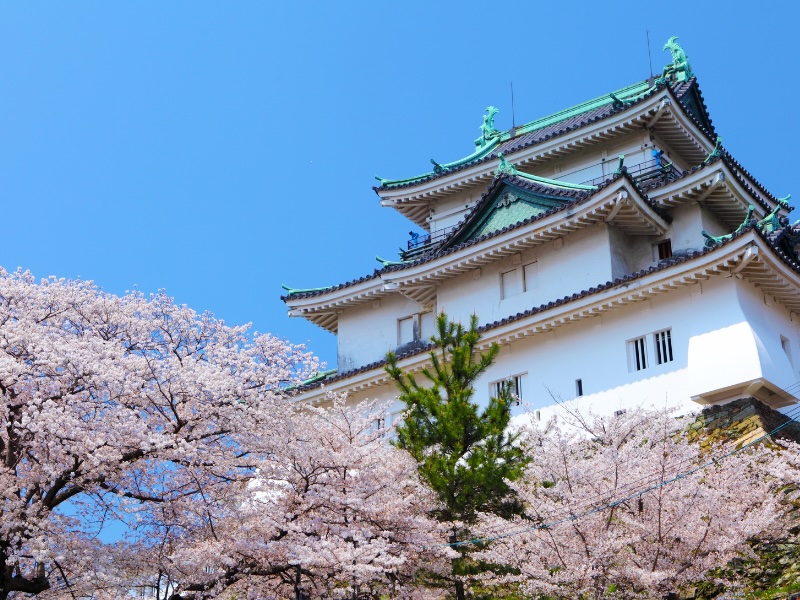
Spiritual Journeys and Sacred Sites
Pilgrims and Pagodas: Dive deep into the spiritual heart of Japan by exploring the Kumano Kodo pilgrimage routes, a UNESCO World Heritage site intertwined with lush landscapes and sacred shrines. Follow the footsteps of emperors and samurais who trekked these paths for spiritual purification. Visit the grand Kumano Sanzan shrines—Kumano Hongu Taisha, Kumano Nachi Taisha, and Kumano Hayatama Taisha—to experience a profound connection to Japan’s religious heritage.
Natural Wonders
Bask in Nature’s Embrace: Wakayama’s geographical tapestry is woven with cascading waterfalls, serene rivers, and rugged coastlines. Head to the Nachi Falls, Japan’s tallest waterfall with a single drop, revered as a divine presence. Relax in the coastal hot springs of Shirahama, where white sandy beaches meet thermal waters, offering a therapeutic respite that rejuvenates both body and mind.
Culinary Delights
Savor the Local Flavors: In Wakayama, every meal is a celebration of local bounty. Indulge in the prefecture’s signature dish, Wakayama ramen, known for its rich broth and succulent pork. Don’t miss trying the umeboshi, pickled plums that are a staple in Japanese kitchens, made from plums harvested in the vast orchards of Minabe and Kishu. For a unique experience, explore the many sake breweries that dot the region, where traditional methods produce some of Japan’s finest rice wines.
Adventure Awaits
Outdoor Excitement: For the active traveler, Wakayama offers endless opportunities for adventure. The clear waters of the Shirarahama area are perfect for snorkeling and diving, revealing vibrant marine life and coral reefs. Hiking enthusiasts can tackle the trails of Mount Koya, ending the day with a stay in a shukubo (temple lodging) where monks provide hospitality and insight into their ascetic lifestyle.
Pack your spirit of adventure and let Wakayama provide the rest—serenity, beauty, and a deep sense of peace that stays with you long after you leave. Welcome to Wakayama, where every path leads to discovery.
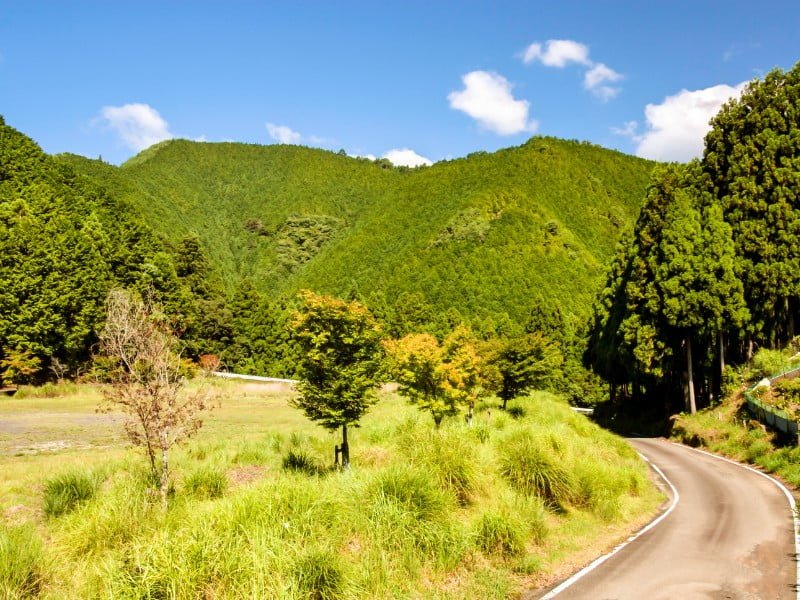
Wakayama City Guide: A Brief History Of Wakayama, Japan
The roots of Wakayama stretch deep into Japan’s ancient past. The region, known for its rugged coastline and verdant mountains, was first inhabited by the ancient hunter-gatherers of the Jomon period (circa 14,000–300 BC). As the centuries passed, the Yayoi people began to cultivate rice in Wakayama, establishing it as a critical agricultural hub.
Early Historical Period:
During the Nara and Heian periods (710–1185), Wakayama began to gain significance in religious and cultural circles. The Kumano Kodo pilgrimage routes were established during this time, connecting Wakayama’s grand shrines with other major religious sites in Kyoto and Osaka. The area’s sacred sites became renowned across the nation as places of worship, spiritual healing, and purification.
Feudal Era:
The feudal era (1185-1603) saw the rise of samurai clans competing for control over territories. Wakayama was no exception. The landscape was dotted with castles, fortresses, and samurai residences. In the 16th century, Toyotomi Hideyoshi, a preeminent daimyo, unified Japan. His brother, Toyotomi Hidenaga, constructed Wakayama Castle, which became the seat of the Kishu Tokugawa clan, one of the three branch clans of the main Tokugawa family that ruled Japan during the Edo period (1603-1868).
Edo Period and Modern Times:
The Edo period was characterized by over two centuries of peace, economic growth, and strict isolationist foreign policies. Wakayama flourished as a strategic and cultural center. Trade routes expanded, and the town of Kainan emerged as a prosperous trading hub. During this time, the Kishu Tokugawa family ruled the province and contributed significantly to the region’s development.
In the late 19th century, the Meiji Restoration ended the Tokugawa shogunate’s rule, and Japan embarked on a rapid course of modernization and westernization. Wakayama transitioned from being a feudal domain to a modern prefecture.
The 20th century brought challenges, including the devastation of World War II. Parts of Wakayama, especially its industrial zones, were targeted during the air raids. However, the post-war period saw a speedy recovery, with industries, especially the chemical and steel sectors, booming in the region.
Cultural and Historical Significance:
Wakayama’s cultural tapestry is rich and varied. It has given birth to a myriad of artistic and spiritual traditions. From the soul-stirring melodies of Kishu traditional songs to the delicate art of Kishu lacquerware and ceramics, Wakayama has made an indelible mark on Japan’s cultural landscape.
The tales and myths surrounding the region’s shrines, such as Kumano Nachi Taisha with its stunning waterfall backdrop, and the towering Wakayama Castle, contribute to the prefecture’s allure. These sites offer visitors a glimpse into the spiritual beliefs, struggles, and triumphs of the people who have called Wakayama home over the centuries.
source: TokyoStreetView – Japan The Beautiful on YouTube
Top 20 Things To Do in Wakayama, Japan For Visitors
Here are the top 20 things to do in Wakayama:
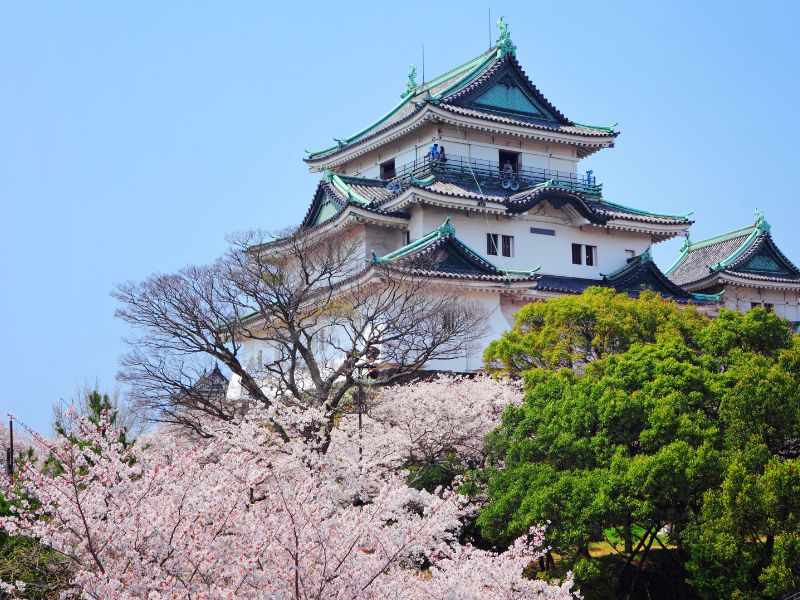
1. Explore Wakayama Castle
Step back in time at Wakayama Castle, majestically perched atop Mount Torafusu. This historic fortress offers panoramic views of the city, making it a favorite spot for photographers and history enthusiasts alike. Wander through the beautifully preserved interiors, which house a museum showcasing samurai artifacts and cultural treasures. During cherry blossom season, the castle grounds transform into a picturesque wonderland, perfect for a leisurely stroll.
- Historic architecture: Admire the traditional design and impressive stone walls.
- Panoramic views: Capture stunning cityscapes from the observation deck.
- Cultural exhibits: Learn about Wakayama’s feudal past through engaging displays.
2. Visit Koyasan (Mount Koya)
Discover the spiritual heart of Shingon Buddhism at Koyasan, a sacred mountain founded by Kobo Daishi (Kukai) in the 9th century. This serene retreat is home to over 100 temples, offering visitors a unique overnight stay experience in temple lodgings (shukubo). Take a peaceful walk through the Okunoin Cemetery, leading to Kobo Daishi’s mausoleum, and feel the tranquility that envelops this holy place. Koyasan also serves as a gateway to the Kumano Kodo pilgrimage trails, connecting you to ancient spiritual pathways.
- Temple stays: Experience traditional Buddhist living with overnight accommodations.
- Spiritual ambiance: Walk through the ethereal Okunoin Cemetery.
- Pilgrimage trails: Start or end your journey on the historic Kumano Kodo routes.
3. Walk the Kumano Kodo Pilgrimage Routes
Embark on a Kumano Kodo pilgrimage, a UNESCO World Heritage site that spans the mountainous Kii Peninsula. These ancient trails offer a spiritual and physical journey through breathtaking natural scenery. Hike towards the Kumano Sanzan (the Three Grand Shrines of Kumano: Kumano Hongu Taisha, Kumano Nachi Taisha, and Kumano Hayatama Taisha), each with its own unique charm and significance. Whether you’re a seasoned hiker or a casual walker, the Kumano Kodo routes provide an enriching experience surrounded by Japan’s stunning landscapes.
- World Heritage trails: Explore routes recognized for their cultural and natural significance.
- Diverse landscapes: Traverse lush forests, serene rivers, and picturesque mountains.
- Spiritual journey: Connect with Japan’s ancient religious traditions along the way.
4. Relax at Shirahama Beach
Unwind on the sands of Shirahama Beach, one of Japan’s most famous white sand beaches. Known for its crystal-clear waters and natural hot springs, Shirahama is perfect for swimming, sunbathing, and enjoying various water sports. Nearby attractions like Engetsu Island and Shirahama Energy Land add to the beach’s appeal, offering additional activities and sightseeing opportunities. After a day of fun in the sun, relax at one of the nearby hot spring resorts for a soothing end to your beach day.
- Pristine beaches: Enjoy the soft white sands and clear blue waters.
- Water activities: Dive into swimming, jet-skiing, and other exciting water sports.
- Nearby attractions: Explore Engetsu Island and unwind at Shirahama Energy Land.
5. Experience the Nachi Falls
Marvel at the natural beauty of Nachi Falls, one of Japan’s tallest and most iconic waterfalls, plunging 133 meters into the valley below. Located within the Kumano Nachi Taisha complex, the falls create a stunning backdrop to the surrounding temples and Seiganto-ji Temple. Take a short hike to get up close to the cascading waters and immerse yourself in the serene atmosphere. In autumn, the area is adorned with vibrant foliage, making your visit even more magical.
- Tallest waterfall: Witness the impressive 133-meter plunge of Nachi Falls.
- Scenic hikes: Enjoy easy trails that bring you closer to the falls.
- Autumn colors: Experience the falls surrounded by colorful autumn leaves.
6. Discover Adventure World
Bring the whole family to Adventure World in Shirahama, where fun meets education. This unique attraction combines a zoo, an aquarium, and an amusement park all in one place. Don’t miss the adorable panda family, a highlight of the zoo, alongside a variety of other animal exhibits and interactive shows. Adventure World also offers thrilling rides and fun-filled activities, ensuring a memorable day for both kids and adults.
- Panda exhibits: Meet the lovable pandas and other fascinating animals.
- Interactive experiences: Engage with petting zoos and animal feeding sessions.
- Amusement rides: Enjoy a variety of rides and attractions for all ages.
7. Take a Dip in Tsubaki Onsen
Indulge in relaxation at Tsubaki Onsen, a hidden gem offering a traditional Japanese hot spring experience. Nestled in a serene setting, the onsen is surrounded by lush nature, providing a peaceful escape from everyday life. The mineral-rich waters are believed to have healing properties, making it a perfect spot for rejuvenation. Whether you’re soaking in outdoor baths or enjoying the tranquil ambiance, Tsubaki Onsen is a must-visit for those seeking relaxation.
- Natural hot springs: Soak in mineral-rich waters known for their healing benefits.
- Tranquil environment: Relax amidst beautiful natural surroundings.
- Traditional experience: Enjoy authentic Japanese onsen facilities and culture.
8. Visit Kimiidera Temple
Explore the serene Kimiidera Temple, located on the slopes of Nagusayama Hill. This temple is the second stop on the Saigoku Kannon Pilgrimage and is renowned for its stunning views of Wakayama Bay. During spring, the temple grounds are adorned with early-blooming cherry blossoms, creating a picturesque setting. Inside, you’ll find a large wooden statue of Kannon, the Goddess of Mercy, adding to the temple’s spiritual atmosphere.
- Scenic location: Enjoy panoramic views of Wakayama Bay from the temple.
- Cherry blossoms: Visit in spring to see beautiful sakura in full bloom.
- Cultural significance: Discover the temple’s role in the Saigoku Kannon Pilgrimage.
9. Explore Wakayama Marina City
Dive into a mix of leisure and entertainment at Wakayama Marina City, an artificial island that’s home to a variety of attractions. Porto Europa, a European-style theme park, recreates the charm of Mediterranean towns with its picturesque streets and buildings. Kuroshio Market is a seafood lover’s paradise, famous for its fresh catches and exciting tuna cutting shows. The marina also hosts regular events and festivals, making it a lively destination for both locals and tourists.
- Porto Europa: Experience Mediterranean charm in a themed park setting.
- Kuroshio Market: Watch live tuna cutting demonstrations and savor fresh seafood.
- Entertainment hub: Enjoy events, festivals, and a vibrant marina atmosphere.
10. Wander Through Awashima Shrine
Step into the enchanting Awashima Shrine, famous for its extensive collection of traditional Japanese dolls. The shrine is dedicated to women’s health and the well-being of children, making it a beloved site for blessings and prayers. Each year, the shrine hosts the Nagashi-bina doll floating ceremony, where dolls are released into the sea to purify and bring happiness. The coastal setting adds to the shrine’s serene and magical ambiance.
- Doll collection: Explore thousands of beautifully crafted traditional dolls.
- Annual ceremonies: Witness the unique Nagashi-bina doll floating event.
- Coastal serenity: Enjoy the peaceful seaside location of the shrine.
11. Enjoy the Scenic Kuroshio Market
Located within Wakayama Marina City, Kuroshio Market is a vibrant spot for food enthusiasts. It’s renowned for its maguro (tuna) cutting demonstrations, where skilled chefs showcase their expertise. Sample a variety of fresh seafood dishes, from sushi and sashimi to grilled delicacies, all prepared right before your eyes. The market also offers a selection of regional products, making it a great place to pick up unique souvenirs.
- Tuna cutting shows: Watch experts skillfully prepare fresh tuna.
- Fresh seafood: Indulge in a wide range of delicious seafood dishes.
- Local products: Find unique regional specialties and souvenirs.
12. Experience the Wakanoura Beauty
Wakanoura is celebrated for its breathtaking natural beauty, inspiring poets and artists for centuries. The area is dotted with picturesque sites like Tamatsushima Shrine and Kataonami Beach, offering stunning views of the bay and traditional Japanese landscapes. Take a boat tour around Wakanoura Bay to fully appreciate its tranquil waters and scenic surroundings. The combination of historical sites and natural splendor makes Wakanoura a must-visit for nature lovers and cultural enthusiasts alike.
- Scenic landmarks: Explore Tamatsushima Shrine and Kataonami Beach.
- Boat tours: Sail around Wakanoura Bay for stunning coastal views.
- Inspirational landscapes: Enjoy the serene and picturesque natural surroundings.
13. Hike in the Sacred Sites and Pilgrimage Routes in the Kii Mountain Range
Embark on a spiritual and physical journey through the Kii Mountain Range, home to numerous sacred sites and ancient pilgrimage routes. These trails, including parts of the Kumano Kodo, offer hikers stunning natural scenery and a deep connection to Japan’s religious heritage. As you trek through lush forests and rugged mountains, you’ll encounter important shrines and temples that have been revered for centuries. Whether you’re seeking solitude or a challenging hike, the Kii Mountain Range provides an unforgettable experience.
- Ancient trails: Walk along historic pilgrimage routes with deep cultural significance.
- Natural beauty: Enjoy diverse landscapes, from dense forests to towering mountains.
- Sacred sites: Visit revered shrines and temples along the way.
14. Visit the Wakayama Prefectural Museum of Natural History
Delve into Wakayama’s natural wonders at the Wakayama Prefectural Museum of Natural History. The museum offers comprehensive exhibits on geology, flora, fauna, and ecosystems specific to Wakayama Prefecture. Interactive displays and educational programs make it an engaging visit for all ages. Whether you’re a science enthusiast or simply curious about the region’s biodiversity, this museum provides valuable insights and fascinating information.
- Comprehensive exhibits: Explore detailed displays on Wakayama’s natural environment.
- Interactive learning: Engage with hands-on exhibits and educational programs.
- Family-friendly: Enjoy an informative and enjoyable experience for all ages.
15. Explore the Saikazaki Fishing Port
Immerse yourself in the vibrant atmosphere of Saikazaki Fishing Port, where you can observe the daily life of local fishermen. The port is bustling with activity, offering fresh seafood stalls and restaurants that serve the day’s catch. Enjoy delicious dishes like grilled fish and spicy squid, prepared right before your eyes. Additionally, boat tours departing from the port provide scenic views of Wakayama’s coastline and a glimpse into the local fishing culture.
- Live fishing action: Watch fishermen in action and experience the port’s lively vibe.
- Fresh seafood: Savor freshly caught seafood prepared on the spot.
- Scenic boat tours: Take a boat ride to enjoy Wakayama’s beautiful coastline.
16. Take a Leisurely Walk on the Kishu Kaido
Stroll along the historic Kishu Kaido, one of Japan’s ancient roads that winds through Wakayama’s picturesque landscapes. This trail offers a journey through time, passing through traditional villages, scenic nature spots, and significant historical sites. The Kishu Kaido is perfect for walking enthusiasts looking to explore Japan’s cultural heritage and natural beauty simultaneously. Whether you choose a short walk or a full-day hike, the Kishu Kaido provides a memorable and enriching experience.
- Historic pathway: Walk along one of Japan’s most significant ancient roads.
- Cultural exploration: Discover traditional villages and historical landmarks.
- Scenic beauty: Enjoy stunning natural landscapes as you traverse the trail.
17. Participate in Wakayama’s Festivals
Experience the lively spirit of Wakayama by participating in its various festivals throughout the year. From the Wakayama Castle Cherry Blossom Festival in spring to the vibrant Wakayama City Summer Festival, these events celebrate the city’s culture, history, and community. Enjoy traditional music, dance performances, and local delicacies that make each festival unique. Attending these festivals provides a deep dive into Wakayama’s rich traditions and vibrant social life.
- Seasonal celebrations: Enjoy festivals that showcase Wakayama’s cultural highlights.
- Traditional performances: Watch dance, music, and theatrical acts.
- Local cuisine: Taste festival specialties and street food offerings.
18. Savor Wakayama Ramen
No trip to Wakayama is complete without trying Wakayama ramen, renowned for its rich soy sauce-based broth and hearty noodles. Numerous ramen shops across the city offer their own unique take on this local favorite, making it a delicious culinary adventure. Whether you prefer a classic bowl or something with a modern twist, Wakayama ramen is sure to satisfy your taste buds. Exploring different ramen shops is a tasty way to experience the city’s vibrant food scene.
- Rich flavors: Enjoy the deep, savory soy sauce broth unique to Wakayama ramen.
- Variety: Discover different styles and variations across local ramen shops.
- Culinary delight: Indulge in a beloved Japanese comfort food.
19. Visit the Wakayama Electric Railway
Ride the charming Wakayama Electric Railway, famous for its cat stationmaster named Tama. This whimsical train service connects Wakayama Station with Kishi Station, offering a delightful journey through scenic areas. The Tama Train is decorated with adorable cat motifs, making it a favorite among both train enthusiasts and cat lovers. It’s a fun and unique way to explore Wakayama, providing picturesque views and a memorable experience.
- Adorable mascot: Meet Tama, the beloved cat stationmaster.
- Scenic route: Enjoy beautiful views as you travel between Wakayama and Kishi.
- Unique experience: Take a memorable ride on the cat-themed Tama Train.
20. Relax at Kataonami Beach
Unwind on the tranquil shores of Kataonami Beach, known for its clear waters and stunning sunset views. This peaceful beach is less crowded than others in Wakayama, offering a serene environment perfect for relaxation. Enjoy activities like swimming, sunbathing, and picnicking while taking in the beautiful coastal scenery. Nearby cafes and restaurants provide delicious refreshments, making Kataonami Beach an ideal spot for a leisurely day by the sea.
- Peaceful setting: Escape the crowds and enjoy a quiet day at the beach.
- Beautiful sunsets: Witness breathtaking sunset views over the ocean.
- Local amenities: Enjoy refreshments and snacks at nearby cafes and restaurants.
source: Tokyo Creative on YouTube
What To Eat and Drink in Wakayama, Japan
Wakayama, while known for its historical and spiritual significance, is also a gastronomic paradise. The region’s proximity to the ocean, mountainous terrain, and fertile lands provides an incredible diversity of ingredients, leading to a rich culinary tradition. Here’s a detailed guide to what you should eat and drink when visiting Wakayama:
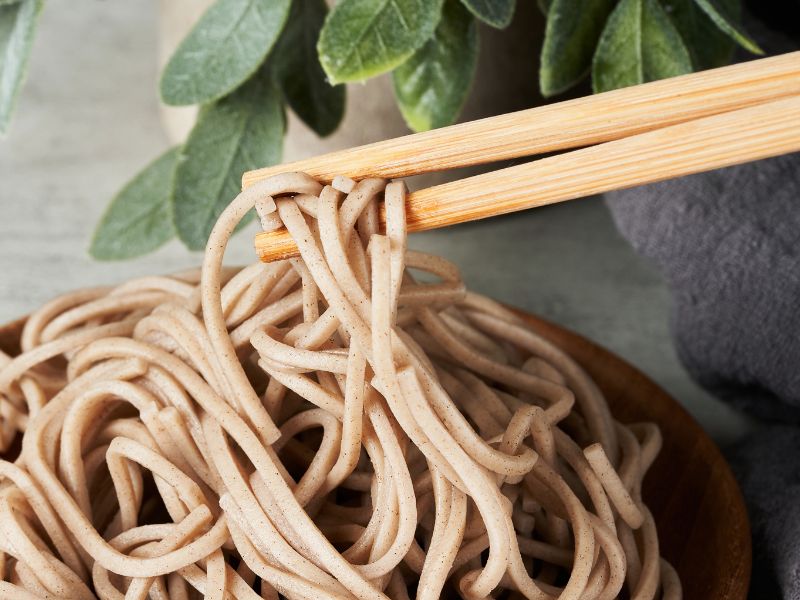
Wakayama Ramen:
- Description: Characterized by its soy sauce (shoyu) based broth and thin, straight noodles, Wakayama ramen (sometimes referred to as Kishu ramen) is the local variation of this Japanese staple. It typically includes succulent slices of chashu (braised pork) and a variety of toppings.
- Where to try: In popular ramen shops in Wakayama City.
Kue Nabe (Longtooth Grouper Hotpot):
- Description: A warming, delicate hotpot dish, Kue Nabe features the longtooth grouper, a high-quality fish known for its tender flesh and subtle flavor. The fish is simmered with vegetables in a light, flavorful broth.
- Where to try: Coastal areas of Wakayama, especially in traditional ryokan (inns) that offer kaiseki meals.
Mikan (Tangerines):
- Description: Wakayama produces a large portion of Japan’s mikan, prized for their sweet, juicy flesh and vibrant flavor.
- Where to try: All over Wakayama, especially in the Arida area. They can be enjoyed fresh or as juices, desserts, and even in marmalades.
Umeboshi (Pickled Plums):
- Description: Wakayama is the largest producer of umeboshi in Japan. These pickled plums, known for their sour taste and health benefits, are often eaten with rice or used in various dishes.
- Where to try: Minabe and Kishu area, where you can also find umeboshi factories and workshops.
Kishu Soba:
- Description: Unlike the regular buckwheat soba, Kishu soba uses a special local variety of buckwheat, offering a richer flavor.
- Where to try: Local soba shops throughout the region, with many establishments hand-making their noodles.
Shoyu (Soy Sauce):
- Description: The town of Yuasa in Wakayama is said to be the birthplace of soy sauce, and the traditional brewing method is still alive here.
- Where to try: Yuasa town, where you can also take a tour of traditional soy sauce breweries.
Maguro (Tuna):
- Description: Thanks to its coastal location, Wakayama enjoys a steady supply of fresh tuna. The fish is served in various forms: sashimi, sushi, or grilled steaks.
- Where to try: Fish markets and sushi restaurants throughout the prefecture.
Sake:
- Description: Wakayama’s climate and pristine waters create an ideal environment for brewing sake. The region produces some top-notch varieties.
- Where to try: Local izakayas (pubs) or specialized sake bars. Some breweries also offer tours and tastings.
Meharizushi:
- Description: A type of sushi made with pickled mustard leaves wrapped around rice and various fillings, often umeboshi or other pickled items.
- Where to try: Local eateries and food stalls, especially during festivals.
Kinokawa River Ayu (Sweetfish):
- Description: Ayu from the Kinokawa River is especially prized for its freshness. It’s often grilled with salt or served as sashimi.
- Where to try: Restaurants along the Kinokawa River or at traditional ryokans.
Tai Meshi (Sea Bream Rice):
- Description: A traditional dish where fresh sea bream, a fish revered in Japan, is cooked with rice. The result is flavorful rice imbued with the essence of the sea bream.
- Where to try: Coastal restaurants, especially in fishing towns.
Kishu Binchotan (White Charcoal) Grilled Dishes:
- Description: Wakayama is famous for its production of Binchotan, a high-quality white charcoal. Locally sourced meat and seafood are often grilled over Binchotan, giving the dishes a distinct, smoky flavor.
- Where to try: Yakiniku (grilled meat) restaurants and upscale dining establishments in the region.
Wakayama Chirimen Jako (Dried Young Sardines):
- Description: These tiny dried fish are a staple in Japanese cuisine. They’re rich in calcium and often sprinkled over rice or used in soups and side dishes.
- Where to try: Local markets and specialty shops.
Awabi (Abalone):
- Description: A luxurious seafood item, abalone from Wakayama is known for its tender texture and rich taste.
- Where to try: Upscale sushi restaurants and kaiseki (traditional multi-course meal) establishments.
Sansai Ryori (Mountain Vegetable Cuisine):
- Description: Wakayama’s mountainous areas yield a variety of wild vegetables and herbs, which are used in traditional Japanese dishes.
- Where to try: Countryside inns and restaurants that specialize in traditional cuisine.
Drinks:
Apart from sake, Wakayama also offers local beverages to quench your thirst:
- Nankai Shochu: A distilled spirit made from sweet potatoes. It’s smoother than some other types of shochu and can be enjoyed straight, on the rocks, or mixed with water.
- Wakayama Fruit Juices: Given Wakayama’s reputation as the “Fruit Kingdom,” don’t miss trying juices made from locally grown fruits like mikan, strawberries, and plums.
- Local Craft Beers: With the craft beer boom, Wakayama now boasts several local breweries producing unique ales and lagers infused with regional flavors.
- Wakayama Ume (Plum) Wine: Made from the region’s renowned plums, this wine is a delightful blend of sweet and sour. It can be enjoyed chilled or on the rocks.
- Green Tea: Given its agricultural prowess, Wakayama produces high-quality green teas. Enjoy a traditional tea ceremony or simply savor a cup at local cafes.
- Yuzu (Citrus) Beverages: The fragrant yuzu fruit is often used to make refreshing drinks, both alcoholic and non-alcoholic.
- Kishu Akishika Sake: A renowned sake brand from Wakayama, it’s recognized for its deep flavor and clear aftertaste.
Desserts & Sweets:
- Mikan-flavored Sweets: Given the abundance of tangerines, many local confectioneries craft mikan-flavored pastries, jellies, and candies.
- Ume-flavored Ice Cream: A refreshing treat with a tangy twist, often found in shops around Minabe and Kishu.
- Wakayama Castella (Sponge Cake): While Castella originates from Nagasaki, Wakayama has its version, often incorporating local flavors like mikan or ume.
- Kishu Anko (Sweet Red Bean Paste): This smooth and sweet paste is a staple in Japanese desserts. The one from Wakayama is distinct in flavor and is often used in wagashi (traditional Japanese confections).
In essence, the culinary scene in Wakayama is a delightful blend of the region’s rich natural resources and age-old traditions. When you visit, take the time to savor the flavors, and you’ll find that each dish and drink tells a story of its own.
source: Currently Hannah on YouTube
Tours For Visitors To Wakayama, Japan
Wakayama, with its blend of spiritual, historical, and natural attractions, offers numerous immersive tours for visitors. Each tour provides a unique vantage point into the culture, history, and beauty of the prefecture. Here’s a detailed guide on some top tours to consider:
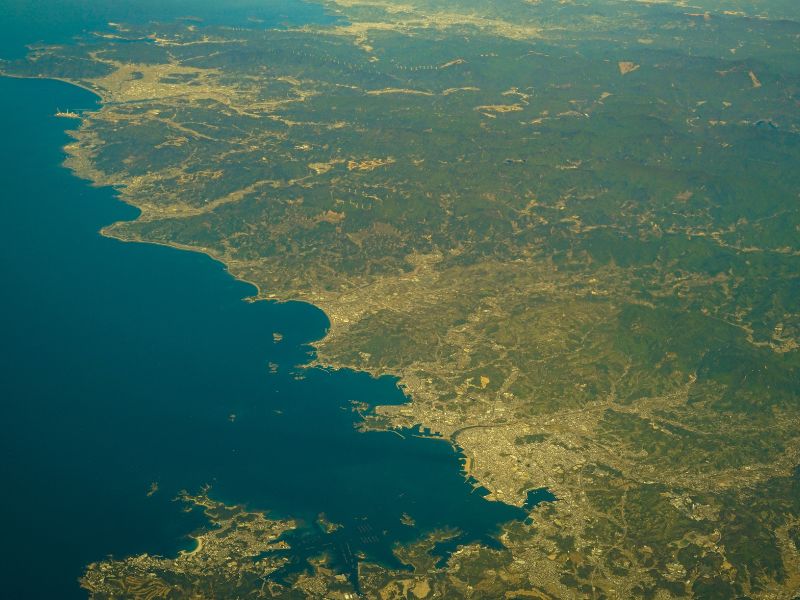
Kumano Kodo Pilgrimage Trail Tour:
- Description: Dive deep into the ancient pilgrimage routes that traverse the Kii Mountains. Some trails are UNESCO World Heritage sites, and they connect various grand shrines and temples.
- Duration: From day trips to multi-day hikes.
- Highlights: Kumano Hongu Taisha, Kumano Nachi Taisha, and Kumano Hayatama Taisha.
Wakayama Castle & Historical Sites Tour:
- Description: Explore the iconic Wakayama Castle and its surroundings, learning about the region’s feudal past.
- Duration: Half-day.
- Highlights: Wakayama Castle, Ohashi Roka bridge, and Tamatsushima Shrine.
Yuasa – The Birthplace of Soy Sauce Tour:
- Description: A guided walk through Yuasa town, exploring ancient houses, soy sauce breweries, and traditional soy-making methods.
- Duration: 2-3 hours.
- Highlights: Soy sauce brewery visits and tastings.
Adventure Tours in Shirahama:
- Description: Experience the natural wonders of Shirahama, from its hot springs to its rock formations.
- Duration: Varies.
- Highlights: Engetsu Island, Sandanbeki Cliff, and Shirahama Onsen.
Wakayama Marina City Seafood Extravaganza:
- Description: A gastronomic tour focusing on the fresh seafood at Wakayama Marina City’s Kuroshio Market.
- Duration: Half-day.
- Highlights: Tuna filleting demonstrations and seafood feasts.
Fruit Picking Experience In Wakayama:
- Description: Explore the orchards of Wakayama, known as the “Fruit Kingdom”. Seasonal fruit picking offers visitors a delightful and fresh experience.
- Duration: 2-3 hours.
- Highlights: Depending on the season – mikan (tangerines), strawberries, persimmons, or plums.
Wakayama Sake Brewery Tour:
- Description: Immerse yourself in the world of sake production, exploring traditional breweries and sampling different sake varieties.
- Duration: Half-day.
- Highlights: Brewery visits, sake tasting, and insights into sake-making traditions.
Mount Koya Spiritual Retreat:
- Description: Mount Koya, or Koyasan, is the center of Shingon Buddhism. This tour includes visits to temples, pagodas, and cemeteries.
- Duration: Day trip or overnight stays.
- Highlights: Okunoin Cemetery, Kongobuji Temple, and shojin ryori (Buddhist vegetarian cuisine).
Dolphin Watching Tours in Taiji:
- Description: Taiji is renowned for its interactions with dolphins. Join a tour to watch these majestic creatures in their natural habitat.
- Duration: 2-4 hours.
- Highlights: Dolphin spotting and coastal views.
Nachi Waterfall & Grand Shrine Visit:
- Description: Nachi Falls is Japan’s tallest waterfall with a single drop. Explore the falls and the adjacent Nachi Taisha, a major pilgrimage site.
- Duration: Half-day.
- Highlights: Nachi Falls, Kumano Nachi Taisha, and Seigantoji Temple.
Tips for Tourists:
- Local Guides: Consider hiring local guides, especially for specialized tours. They offer deep insights, anecdotes, and access to off-the-beaten-path spots.
- Dress Appropriately: For religious sites or hiking tours, ensure you dress appropriately – modest attire for temples and sturdy footwear for trails.
- Off-season Visits: Wakayama can get crowded during peak seasons. Consider traveling during off-peak times for a more relaxed experience.
- Customized Tours: Some agencies offer tailored tours based on interests, be it gastronomy, history, nature, or spirituality.
- Stay Connected: Rent a pocket Wi-Fi or get a local SIM card to stay connected and access information on the go.
Wakayama’s multifaceted charm is best experienced through its diverse tours. Whether you’re seeking spiritual enlightenment, historical insights, culinary delights, or natural beauty, Wakayama has a tour perfectly suited for your interests.
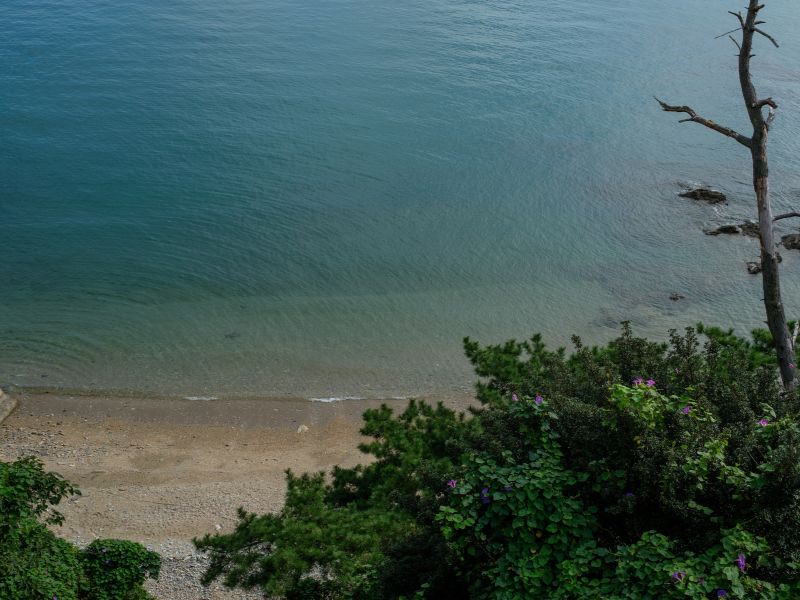
Wakayama Accommodations Guide: Hotels, Guesthouses and Hostels
Wakayama’s allure as a travel destination, with its blend of spiritual sanctuaries, natural wonders, and culinary delights, is complemented by a wide array of accommodations. Whether you’re a luxury traveler, a backpacker, or somewhere in between, Wakayama has the perfect place for you to rest your head.
Hotels:
- Wakayama Marina City Hotel:
- Location: Marina City, Wakayama City.
- Description: A resort hotel offering both Western and Japanese-style rooms, with views of the marina and the ocean.
- Amenities: On-site restaurants, spa, and easy access to Kuroshio Market.
- Shirahama Key Terrace Hotel Seamore:
- Location: Shirahama.
- Description: A coastal hotel offering panoramic views of the Pacific Ocean. Rooms vary from Western-style to traditional tatami rooms.
- Amenities: Hot spring baths, buffet-style dining with seafood specialties, and shuttle services.
- Hotel Granvia Wakayama:
- Location: Wakayama City, close to Wakayama Station.
- Description: A modern hotel ideal for business travelers and tourists alike.
- Amenities: Western-style rooms, on-site restaurants, conference facilities, and free Wi-Fi.
Guesthouses:
- Guesthouse RICO:
- Location: Wakayama City.
- Description: A cozy, renovated guesthouse with a mix of Japanese and Western design elements.
- Amenities: Shared kitchen, communal lounge, free Wi-Fi, and bicycle rentals.
- Guest House Saikaan:
- Location: Mount Koya.
- Description: A traditional guesthouse providing an authentic experience in the heart of the spiritual mountain retreat.
- Amenities: Tatami rooms, communal baths, vegetarian meals, and proximity to temples.
- NAMIKI Hostel & Café Bar:
- Location: Wakayama City.
- Description: A fusion of traditional architecture and modern amenities.
- Amenities: Café bar on the ground floor, dormitory-style rooms, and private family rooms.
Hostels:
- Kii-Tanabe City Kumano Kodo Nakahechi Michi-no-Eki Youth Hostel:
- Location: Tanabe City.
- Description: Ideal for hikers and backpackers trekking the Kumano Kodo trails.
- Amenities: Bunk beds, communal kitchen, laundry facilities, and information on the Kumano Kodo.
- Guest House SHIRO:
- Location: Shirahama.
- Description: A budget-friendly option close to Shirahama’s main attractions.
- Amenities: Dormitory rooms, shared lounge, and kitchen.
- Wakayama Guest House Shido:
- Location: Wakayama City.
- Description: A warm, friendly environment, great for meeting fellow travelers.
- Amenities: Mixed dormitory rooms, bicycle rentals, and a communal kitchen.
Additional Tips:
- Ryokan Experience: For a unique and authentic Japanese experience, consider staying at a ryokan – a traditional Japanese inn. Many ryokans in Wakayama come with on-site onsen (hot springs).
- Temple Lodging: In areas like Mount Koya, visitors can opt for shukubo, or temple lodgings, where they can partake in morning prayers and enjoy shojin ryori, traditional Buddhist vegetarian cuisine.
- Budgeting: Wakayama offers a broad price range, from luxury hotels to budget hostels. It’s wise to book in advance, especially during peak seasons, to secure the best rates.
- Connectivity: Check with your accommodation about Wi-Fi facilities, especially if you’re relying on internet connectivity for travel planning and communications.
- Local Etiquette: If you’re staying in traditional accommodations, familiarize yourself with basic etiquettes such as how to wear yukata (summer kimono) or proper onsen behavior.
Wakayama, with its blend of the ancient and the contemporary, ensures that every traveler finds a comfortable place to recharge. The variety of accommodations reflects the region’s diverse charm, making your stay a pivotal part of your overall experience.
source: Samuel and Audrey on YouTube
Day Trips From Wakayama, Japan
Wakayama prefecture, nestled on the Kii Peninsula, is itself an enchanting travel destination. However, its strategic location also makes it a superb base for numerous captivating day trips to other parts of the Kansai region. Here’s a detailed guide to some of the top day trips you can undertake from Wakayama:
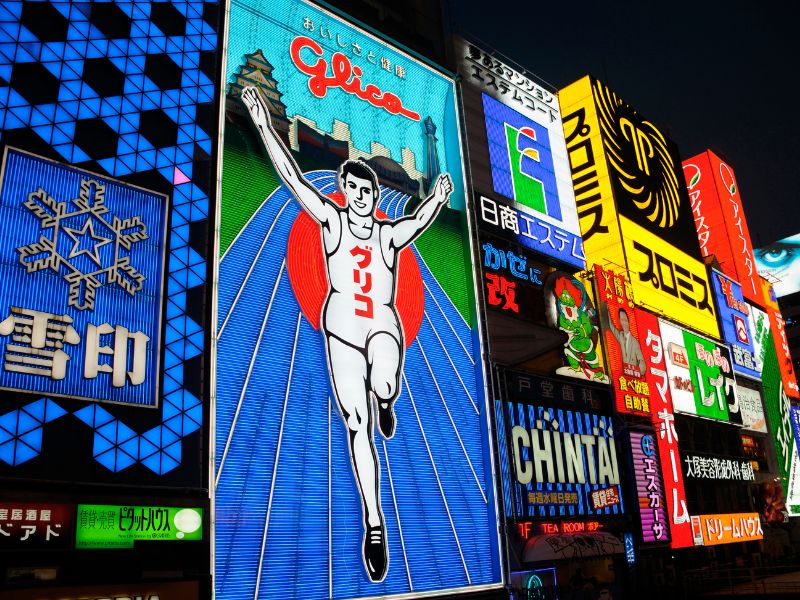
Osaka:
- Travel Time: About 1 to 1.5 hours by train.
- Highlights:
- Osaka Castle: A historic and iconic monument surrounded by beautiful gardens.
- Dotonbori: Vibrant district known for neon lights, street food, and the Glico Man sign.
- Universal Studios Japan: A major theme park with thrilling rides and shows.
- Shinsaibashi: A popular shopping arcade.
- Recommendations: Try local delicacies like takoyaki (octopus balls) and okonomiyaki (savory pancake).
source: Samuel and Audrey on YouTube
Nara:
- Travel Time: About 2 hours by train.
- Highlights:
- Nara Park: Home to friendly deer and picturesque landscapes.
- Todai-ji Temple: Houses the world’s largest bronze Buddha statue.
- Kasuga Taisha Shrine: Famous for its lantern-lined pathways.
- Isuien Garden: A serene Japanese garden.
- Recommendations: Spend time feeding and photographing the semi-wild deer in Nara Park.
Kyoto:
- Travel Time: Around 2 to 2.5 hours by train.
- Highlights:
- Fushimi Inari Shrine: Known for its thousands of red torii gates.
- Kinkaku-ji (Golden Pavilion): A Zen temple covered in gold leaf.
- Gion District: Kyoto’s geisha district with traditional wooden machiya houses.
- Arashiyama Bamboo Grove: A serene bamboo forest.
- Recommendations: Consider wearing a traditional kimono for a day and take memorable photos against the historic backdrop of Kyoto.
Kobe:
- Travel Time: About 2 hours by train.
- Highlights:
- Kobe Harborland: A shopping and entertainment district by the waterfront.
- Ikuta Shrine: One of the oldest Shinto shrines in Japan.
- Mount Rokko: Offers panoramic views of the city and Osaka Bay.
- Nunobiki Herb Garden: A delightful garden accessed by a ropeway.
- Recommendations: Do sample the world-renowned Kobe beef in a local restaurant.
Mount Koya (Koyasan):
- Travel Time: About 1.5 to 2 hours by train and cable car.
- Highlights:
- Okunoin Cemetery: The largest cemetery in Japan with ancient tombstones.
- Kongobuji Temple: The head temple of Shingon Buddhism.
- Banryutei Rock Garden: The largest rock garden in Japan.
- Recommendations: If possible, stay overnight in a temple lodging (shukubo) to experience traditional Buddhist life.
Ise:
- Travel Time: Around 3 hours by train.
- Highlights:
- Ise Grand Shrine (Ise Jingu): Japan’s most sacred Shinto shrine.
- Okage Yokocho: A reconstructed Edo-period town with shops and eateries.
- Meoto Iwa (Wedded Rocks): Two sacred rocks in the sea, connected by a rope.
- Recommendations: Enjoy the serene atmosphere and try local specialties like Ise udon.
Kumano Kodo:
- Travel Time: About 2 hours by train and bus to the starting points of various trails.
- Highlights:
- Nakahechi Route: The most popular pilgrimage route leading to Kumano Hongu Taisha.
- Daimon-zaka: A picturesque cobblestone staircase surrounded by ancient cedar trees.
- Kumano Hayatama Taisha: One of the three grand shrines of Kumano.
- Kumano Nachi Taisha: A historic shrine with the beautiful Nachi Falls nearby.
- Recommendations: Wear comfortable footwear and pack essentials, as some trails can be long and challenging.
Yoshino:
- Travel Time: About 2.5 hours by train.
- Highlights:
- Mount Yoshino: Renowned for cherry blossoms with over 30,000 cherry trees blooming in spring.
- Kinpusen-ji Temple: The second largest wooden building in Japan, housing giant statues of Zao Gongen.
- Yoshimizu Shrine: A UNESCO World Heritage site with historical treasures.
- Recommendations: Visit in spring for the cherry blossoms, but expect crowds.
Hikone:
- Travel Time: Around 3 hours by train.
- Highlights:
- Hikone Castle: One of Japan’s original remaining castles, a national treasure.
- Genkyu-en Garden: A serene landscaped garden adjacent to the castle.
- Hikone Canal: Offers pleasant boat rides.
- Recommendations: Wander the historic streets of Yume Kyobashi Castle Road for a throwback to the samurai era.
Uji:
- Travel Time: About 2 to 2.5 hours by train.
- Highlights:
- Byodo-in Temple: A UNESCO World Heritage site featuring the Phoenix Hall.
- Ujigami Shrine: Japan’s oldest existing shrine.
- Uji River: Offers scenic boat rides.
- Tea Houses: Uji is famous for its green tea; visit a local tea house for a tasting experience.
- Recommendations: Indulge in matcha-flavored sweets and foods, especially the famous matcha noodles.
Awaji Island:
- Travel Time: About 2 hours by car or bus.
- Highlights:
- Izanagi Shrine: Associated with the creation of Japan in mythology.
- Awaji Yumebutai: A complex designed by famous architect Tadao Ando, featuring gardens and terraces.
- Nojima Fault: Offers insights into the Great Hanshin Earthquake of 1995.
- Recommendations: Visit the Naruto Whirlpools by boat, one of the island’s natural wonders.
Sakai:
- Travel Time: About 1.5 hours by train.
- Highlights:
- Sakai Plaza of Rikyu and Akiko: Dive deep into the city’s tea culture and poetic history.
- Nanshuji Temple: A serene Zen temple with a beautiful garden.
- Old Sakai Lighthouse: An iconic structure offering panoramic views.
- Sakai City Traditional Crafts Museum: Learn about traditional knife making and other local crafts.
- Recommendations: Sakai is known for its traditional blades; consider purchasing a hand-crafted knife as a unique souvenir.
Tottori Sand Dunes:
- Travel Time: Approximately 3-4 hours by train.
- Highlights:
- Sand Dunes: The largest sand dunes in Japan, offering a unique desert landscape.
- Camel Rides: Experience a ride across the dunes.
- The Sand Museum: Houses intricate sand sculptures by artists from around the world.
- Recommendations: Best visited during spring or autumn to avoid the summer heat or winter chill.
Wakasa Bay:
- Travel Time: Around 3 hours by train.
- Highlights:
- Beaches: Pristine shores ideal for sunbathing, swimming, and snorkeling.
- Miketsukuni Wakasa Obama Food Culture Museum: Dive into the historical and cultural relationship between Wakasa and Kyoto through food.
- Wakasa Fisherman’s Wharf: A great spot to taste fresh seafood.
- Recommendations: Savor the local delicacy, funazushi, a type of fermented sushi.
Nachi Falls and Kumano Nachi Taisha:
- Travel Time: About 2-3 hours by train and bus.
- Highlights:
- Nachi Falls: Japan’s tallest waterfall with a single drop, set against a verdant backdrop.
- Kumano Nachi Taisha: A picturesque shrine situated close to the waterfall.
- Seiganto-ji Temple: Next to the waterfall, it offers stunning views and photo opportunities.
- Recommendations: The three-storied pagoda with the waterfall in the background is an iconic view, so make sure to capture it!
Adventure to Minami:
- Travel Time: 3 hours by train.
- Highlights:
- Tanabe: The gateway to the Kumano Kodo pilgrimage routes.
- Susami Crustacean Aquarium: Houses a variety of intriguing marine life.
- Adventure World: A theme park and zoo combined, perfect for families.
- Recommendations: Enjoy a stroll on Shirarahama Beach, known for its white sands and clear waters.
Tips for Day Trippers:
- Transportation: The JR (Japan Rail) Pass or Kansai regional passes can be cost-effective if you plan multiple day trips.
- Start Early: To make the most of your day, leave early in the morning.
- Local Delicacies: Each destination has its unique cuisine. Make sure to try the local specialties.
- Tourist Information Centers: They often provide free maps and helpful advice on navigating the area.
From bustling cities to tranquil spiritual havens, the regions around Wakayama offer an array of experiences. Each destination provides a distinct slice of Japanese culture and history, ensuring that every day trip becomes a cherished memory.

Wakayama Transportation Guide
Wakayama, a gem of the Kansai region, offers an array of transport options for locals and visitors alike. Whether you’re scaling the spiritual trails of Mount Koya or exploring the bustling streets of Wakayama City, this comprehensive guide ensures you navigate the region with ease.
Trains:
- JR (Japan Railways) Lines:
- Wakayama Line: Connects Wakayama with Osaka.
- Kinokuni Line: Connects Wakayama City to the southern part of Wakayama Prefecture, and runs along the coast, providing access to Shirahama and other scenic spots.
- Kisei Main Line: Connects with Mie Prefecture.
- Nankai Electric Railway:
- This private railway connects Osaka to Wakayama City and Mount Koya (Koyasan).
- Tips:
- The JR Rail Pass can be handy if you’re traveling across multiple cities in Japan. However, for travels strictly within Wakayama, look into local and regional passes for cost-effective travel.
- Trains are punctual. Always check the timetable, especially if you’re catching the last train.
Buses:
- Wakayama Bus: The primary bus network covering Wakayama City and its surrounding regions.
- Ryujin Bus: Useful for accessing the Ryujin Onsen area.
- Tips:
- Buses are an excellent way to reach remote locations not served by trains.
- Pay attention to schedules, as some routes, especially in rural areas, may have infrequent services.
Ferries and Cruises:
- Wakayama Marina City: A port that has several cruise services, including those to nearby islands.
- Kada to Tomogashima Island Ferry: Regular services to the intriguing Tomogashima Islands, known for their historical ruins.
- Tips:
- Enjoy the scenic beauty during ferry rides, particularly during sunset or sunrise.
- Check the weather conditions before embarking on a ferry ride.
Rental Cars:
- There are several car rental companies operating in Wakayama, including popular ones like Toyota Rent a Car, Nissan Car Rental, and Nippon Rent-a-Car.
- Tips:
- While trains and buses cover most tourist spots, a rental car gives you flexibility, especially if you’re exploring off-the-beaten-path destinations.
- Familiarize yourself with Japanese traffic rules. Remember, Japan drives on the left side of the road.
Bicycles:
- Wakayama City and other towns offer bicycle rental services.
- Tips:
- Biking is an eco-friendly and intimate way to explore the region, particularly the coastlines and city areas.
- Always wear a helmet and be cautious in areas with heavy traffic.
Air Travel:
- Wakayama has its airport, Nanki Shirahama Airport, which connects to Tokyo and a few other domestic destinations.
- Tips:
- The airport is close to Shirahama, famous for its hot springs and beaches, making it convenient for travelers heading directly there.
- Check flight schedules in advance, as services might be limited compared to bigger airports.
Taxis:
- Taxis are available throughout Wakayama, particularly in urban areas.
- Tips:
- Taxis can be expensive for long distances but are convenient for short hops or areas with less frequent public transportation.
- Most taxis accept credit cards, but it’s always good to carry some cash.
General Transportation Tips:
- Language: While major stations and tourist hubs may have English signages and announcements, in remote areas, English might be limited. It’s beneficial to have a translation app or guidebook.
- IC Cards: Cards like ICOCA can be used on trains, buses, and even some convenience stores. They’re rechargeable and eliminate the need for buying tickets every time.
- Tourist Information Centers: Found in major train stations and tourist spots, these centers provide maps, timetables, and advice on the best transport options.
Wakayama’s efficient and varied transportation network ensures that visitors can seamlessly access its many attractions. Whether you’re journeying deep into the spiritual heartlands or enjoying its coastal beauty, this guide will assist you in making your travels smooth and enjoyable.
source: MIKI from Japan on YouTube
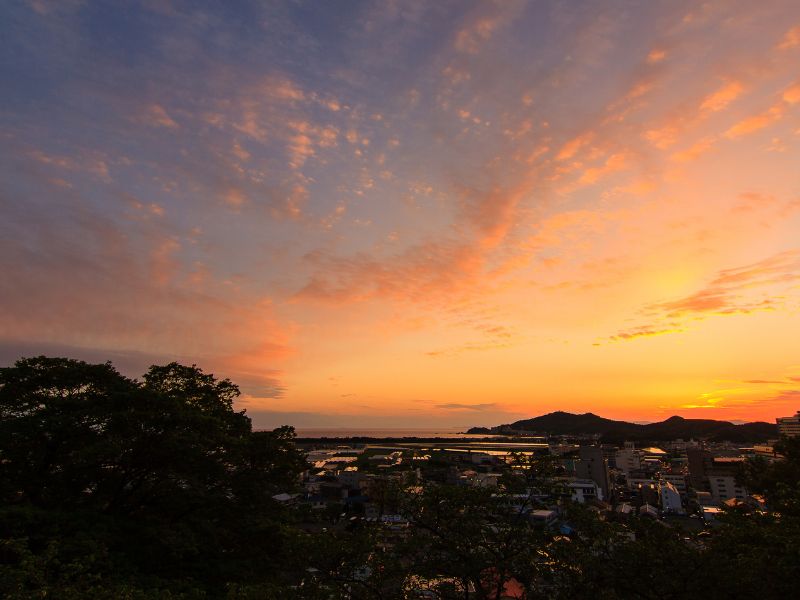
Wakayama 1 Day Travel Itinerary
Nestled in the heart of the Kansai region, Wakayama Prefecture offers a diverse tapestry of experiences. From spiritual sojourns to seaside adventures, one day is but a snapshot. However, with careful planning, you can capture the essence of this enchanting area.
Morning
7:00 am – Arrival at Wakayama Station Begin your day early by arriving at Wakayama Station. Equip yourself with a map from the tourist information center and perhaps grab a quick breakfast snack, like the local ‘taiyaki’ (fish-shaped cake filled with sweet fillings), from one of the station’s eateries.
8:00 am – Wakayama Castle A mere 20-minute walk or a quick bus ride from the station, Wakayama Castle stands tall amidst the city. The castle, with its storied history, offers panoramic views from its keep. The surrounding park, especially if you’re visiting during cherry blossom season, is a serene way to start your day.
9:30 am – Kimii-dera Temple Head to Kimii-dera, a scenic temple located on a hillside overlooking the city. It’s particularly renowned for its early-blooming cherry trees and 231 steps that lead to the main hall. The climb is worth it, given the picturesque views and tranquil atmosphere.
Late Morning to Afternoon
11:00 am – Kuroshio Market Make your way to Kuroshio Market to savor the bounties of the sea. Participate in tuna cutting demonstrations and feast on some of the freshest seafood, from sushi to grilled fish.
12:30 pm – Tomogashima Islands Embark on a ferry from Kada Port to the mysterious Tomogashima Islands. These islands are not only rich in natural beauty but also house the ruins of old military fortifications. The juxtaposition of nature reclaiming these old structures offers a unique sightseeing experience. Be mindful of the ferry schedules.
3:00 pm – Marina City Return from the islands and explore Wakayama Marina City. Dive deep into the world of pearls at the Pearl Museum or simply enjoy the Mediterranean-inspired architecture and ambiance of the area.
Late Afternoon to Evening
4:30 pm – Okanoyama Seaside Park A short journey will take you to Okanoyama Seaside Park. This seaside park provides a calming environment, perfect to relax after a day of exploration. Enjoy the beach, the soothing sounds of waves, and if you’re lucky, a beautiful sunset.
6:00 pm – Dinner in Wakayama City Return to Wakayama City and venture to a local izakaya or a traditional restaurant. The region’s specialties include Wakayama ramen, known for its rich soy-based broth, and kue (longtooth grouper), a prized fish in the region.
Night
8:00 pm – Nanki Shirahama Onsen While it’s a bit of a trip, if you want to experience the magic of Wakayama’s hot springs, head to Shirahama Onsen. Renowned for centuries for its healing properties, it’s a perfect way to relax and reflect on your day’s journey. There are several baths, both public and private, to choose from.
10:00 pm – Return & Rest Return to Wakayama City and retire for the night, either catching a late train out or checking into one of the city’s comfortable accommodations.
Travel Tips:
- Time Management: Given the packed schedule, be mindful of the time. Adjust activities if you find yourself spending longer in a particular spot.
- Wear Comfortable Shoes: With a mix of walking, climbing, and exploring, ensure you’re dressed comfortably.
- Stay Hydrated and Nourished: Carry a water bottle and some snacks, especially if venturing into more remote areas.
While this itinerary offers just a glimpse of Wakayama, it encapsulates its spiritual heritage, natural beauty, and gastronomic delights. A day in Wakayama promises memories that will last a lifetime.
source: Angela Maravilla on YouTube
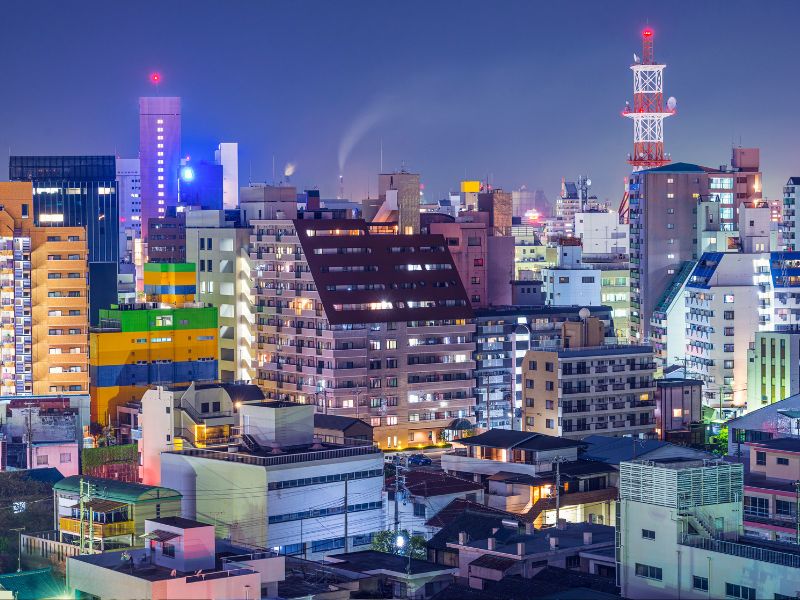
Wakayama 3-4 Days Travel Itinerary
Discover the cultural richness, gastronomic treasures, and scenic beauty of Wakayama Prefecture over a span of 3 to 4 days. This itinerary ensures a fulfilling journey through the region’s diverse offerings.
Day 1: Wakayama City Exploration
Morning:
- 7:30 am – Breakfast at a local cafe near Wakayama Station.
- 8:30 am – Wakayama Castle: Delve into the history of this majestic castle and enjoy panoramic views of the city. Take a stroll around the surrounding park.
Afternoon:
- 12:00 pm – Lunch at a local eatery. Sample Wakayama ramen or indulge in fresh seafood.
- 1:30 pm – Kimii-dera Temple: Ascend the steps leading to the temple, soaking in the views and serenity.
- 3:00 pm – Adventure World: An aquarium-zoo-amusement park hybrid, perfect for families or those who appreciate wildlife.
Evening:
- 6:30 pm – Dinner in Dotonbori (about an hour away by train): Experience the vibrancy of Osaka’s famous street food haven.
Day 2: Seaside Adventures & Hot Springs
Morning:
- 8:00 am – Breakfast at your accommodation.
- 9:00 am – Tomogashima Islands: Explore the natural beauty and intriguing ruins. Take a packed lunch for a seaside picnic.
Afternoon:
- 2:00 pm – Shirahama Beach: Relax at this famous white-sand beach.
- 4:00 pm – Engetsu Island: Witness the natural arch of this island, especially captivating during sunset.
Evening:
- 6:30 pm – Dinner at Shirahama: Dive into the local seafood dishes.
- 8:00 pm – Nanki Shirahama Onsen: Unwind in the therapeutic waters of this renowned hot spring.
Day 3: Spiritual Journey to Koyasan
Morning:
- 7:00 am – Early breakfast.
- 8:00 am – Travel to Koyasan: Reach via the Nankai Koyasan Line.
- 10:00 am – Okunoin: Explore Japan’s largest cemetery and the mausoleum of Kobo Daishi.
Afternoon:
- 12:30 pm – Vegetarian Lunch: Savor shojin ryori, traditional Buddhist vegetarian cuisine, at one of Koyasan’s temples.
- 2:00 pm – Kongobu-ji Temple: Admire the beautiful sliding door paintings and the Banryutei rock garden.
- 4:00 pm – Daimon Gate: Witness the grand entrance to Koyasan and its twin statues.
Evening:
- 6:00 pm – Stay at a Shukubo: Experience temple lodging and partake in evening rituals.
- 7:30 pm – Dinner at the Shukubo: Another chance to enjoy shojin ryori.
Day 4: Nature & Farewell
Morning:
- 6:00 am – Morning Prayers: Participate in the temple’s morning rituals.
- 7:30 am – Breakfast at the Shukubo.
- 9:00 am – Koyasan Reihokan Museum: Marvel at religious artifacts and art.
Afternoon:
- 12:00 pm – Lunch in Koyasan.
- 1:30 pm – Ryujin Onsen: Nestled amidst lush mountains, relax in these hot springs known for their skin-beautifying properties.
- 3:30 pm – Kumano Kodo Pilgrimage Trails: Depending on your energy levels, take a short trek on one of these ancient pilgrimage routes.
Evening:
- 6:00 pm – Farewell Dinner in Wakayama City: A last chance to savor the region’s culinary delights.
- 8:00 pm – Shopping and Souvenirs: Pick up mementos, ranging from local crafts to food products.
Travel Tips:
- Wakayama Tourist Pass: Consider purchasing this pass for unlimited travel on certain trains and buses.
- Luggage: For Koyasan, pack a small overnight bag and utilize luggage forwarding services.
- Wear Comfortable Footwear: You’ll be walking a lot, especially in Koyasan and on the Kumano Kodo trails.
- Stay Connected: A portable Wi-Fi device or SIM card can help with on-the-go navigation and translation.
This 3-4 day itinerary for Wakayama offers a blend of history, culture, nature, and relaxation. You’ll leave with a profound appreciation for the prefecture’s multi-faceted allure. Enjoy your journey!
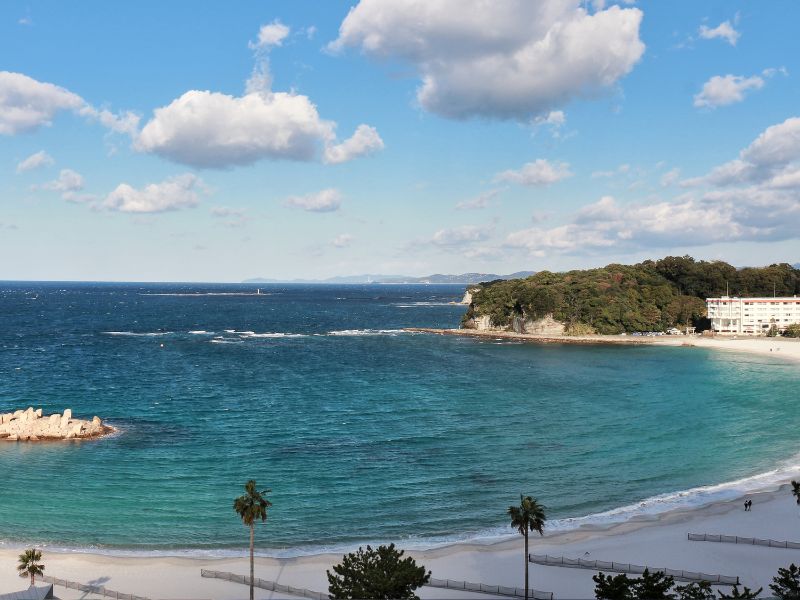
Wakayama 1 Week Travel Itinerary
Wakayama Prefecture is a treasure trove of natural wonders, historical sites, and spiritual sanctuaries. A week allows you to dive deep into its essence, granting you a comprehensive experience of its beauty and allure.
Day 1: Discover Wakayama City
Morning:
- 7:30 am – Breakfast at a café near Wakayama Station.
- 8:30 am – Wakayama Castle: Explore the grounds and learn about the region’s samurai past.
- 10:30 am – Kimii-dera Temple: A historic temple with panoramic views.
Afternoon:
- 1:00 pm – Lunch at a traditional Japanese restaurant.
- 2:30 pm – Wakayama Marina City: Explore the marina and its attractions, including Kuroshio Market.
Evening:
- 6:00 pm – Dinner in Wakayama City.
Day 2: Seaside and Island Adventures
Morning:
- 8:00 am – Breakfast.
- 9:00 am – Ferry to Tomogashima Islands: Discover the ruins and natural beauty.
Afternoon:
- 1:00 pm – Picnic Lunch on the Island.
- 3:00 pm – Return and head to Shirahama Beach: Relax and swim.
Evening:
- 7:00 pm – Dinner at a seaside restaurant in Shirahama.
Day 3: Shirahama and Onsen Experience
Morning:
- 8:00 am – Breakfast in Shirahama.
- 9:30 am – Sandanbeki Cave: Marvel at the cliffs and caves.
Afternoon:
- 12:30 pm – Lunch.
- 2:00 pm – Adventure World: See pandas, aquatic animals, and more.
Evening:
- 6:30 pm – Dinner.
- 8:00 pm – Nanki Shirahama Onsen soak.
Day 4: Spiritual Insights in Koyasan
Morning:
- 6:30 am – Early Breakfast.
- 8:00 am – Travel to Koyasan.
- 10:00 am – Okunoin: Explore the mystical cemetery and mausoleum.
Afternoon:
- 1:00 pm – Shojin Ryori (Buddhist vegetarian cuisine) Lunch.
- 2:30 pm – Garan temple complex: See the iconic pagodas and structures.
Evening:
- 6:00 pm – Dinner at Shukubo (temple lodging).
- 8:00 pm – Evening temple rituals.
Day 5: Koyasan to Kumano Kodo
Morning:
- 6:30 am – Morning prayers at the temple.
- 8:00 am – Breakfast at Shukubo.
- 10:00 am – Koyasan Reihokan Museum.
Afternoon:
- 12:30 pm – Lunch and depart for Kumano Kodo.
- 3:00 pm – Start the Daimonzaka section: A picturesque introduction to the pilgrimage trails.
Evening:
- 6:00 pm – Check-in at a ryokan near the Kumano Kodo trails.
- 7:30 pm – Traditional Kaiseki dinner.
Day 6: Kumano Kodo Exploration
Morning:
- 7:30 am – Breakfast.
- 9:00 am – Kumano Hayatama Taisha: One of the Grand Shrines of the Kumano Kodo.
Afternoon:
- 1:00 pm – Lunch in Shingu.
- 3:00 pm – Kumano Nachi Taisha and Nachi Falls: Continue the spiritual pilgrimage, ending with the stunning waterfall.
Evening:
- 7:00 pm – Dinner in Nachi or Kii-Katsuura.
Day 7: Wrapping up in Ryujin and Wakayama City
Morning:
- 8:00 am – Breakfast.
- 9:30 am – Ryujin Onsen: Relax in these skin-beautifying hot springs.
Afternoon:
- 12:30 pm – Lunch.
- 2:00 pm – Return to Wakayama City and explore any missed spots or shopping areas.
Evening:
- 7:00 pm – Farewell Dinner in Wakayama City. Relish the region’s specialties one last time.
Travel Tips:
- Wakayama Tourist Pass: Highly beneficial for unlimited travel on designated transport routes.
- Luggage Service: Utilize luggage forwarding to enjoy unburdened exploration, especially in Koyasan and Kumano Kodo.
- Stay Hydrated: Carry a reusable water bottle.
- Weather Prep: Wakayama’s coastal to mountainous terrain can mean varied weather. Pack layers and rain gear.
This week-long itinerary ensures a deep immersion into Wakayama’s spiritual, historical, and natural gems. Here’s to a memorable and enriching journey through Wakayama!
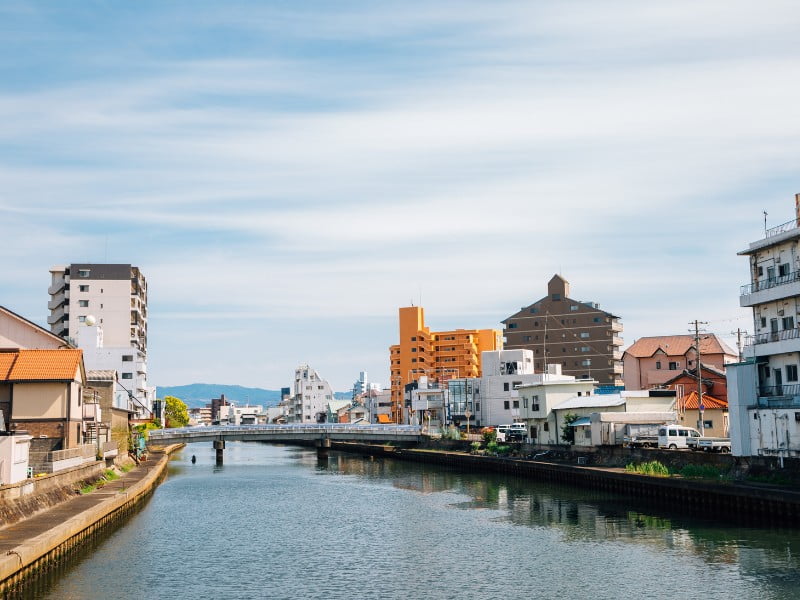
When Is The Best Time To Visit Wakayama?
Wakayama, located on the Kii Peninsula, boasts a mix of coastal, urban, and mountainous terrains, ensuring varied experiences across different seasons. Determining the best time to visit depends largely on personal preferences, activities on your itinerary, and the kind of weather you favor. Here’s a detailed seasonal breakdown to guide you:
Spring (March to May):
- Cherry Blossom (Sakura) Season: One of the most iconic times to visit Japan, cherry blossom season usually peaks in early April for Wakayama. Witnessing sakura blooms against the backdrop of historic sites like Wakayama Castle is nothing short of magical.
- Temperature and Climate: Temperatures are mild, starting cooler in March and warming up by May. Expect temperatures to range from 10°C to 20°C.
- Events and Festivals: Apart from cherry blossom festivals, there’s the Kishu Yosakoi Dance Festival in Wakayama City, where dance teams put up vibrant performances.
Summer (June to August):
- Warm and Humid: Summer in Wakayama can be hot and humid, with temperatures often exceeding 30°C. It’s a perfect time for beach lovers, with Shirahama Beach becoming a popular spot.
- Rainy Season: June and part of July is the rainy season (Tsuyu), characterized by frequent rain and a muggy atmosphere.
- Events and Festivals: The summer Obon Festival, where locals honor their ancestors, is a significant event. Also, firework displays, like the Wakayama Marina City Fireworks Festival, light up the summer skies.
Autumn (September to November):
- Fall Foliage: Just as the cherry blossoms are iconic in spring, the autumn foliage in Wakayama is breathtaking. Especially in areas like Koyasan, the maple trees turn vibrant shades of red, orange, and gold.
- Temperature and Climate: Similar to spring, autumn offers mild temperatures that gradually cool down from September to November, ranging from 15°C to 25°C.
- Events and Festivals: The Daimonji Fire Festival in Koyasan, where huge bonfires are lit to guide ancestral spirits, takes place in August’s end or early September.
Winter (December to February):
- Cool and Quiet: Winter sees fewer tourists, making it a serene time to explore. While Wakayama City has milder winters with temperatures ranging from 5°C to 10°C, mountainous regions like Koyasan can be colder, sometimes with snow.
- Onsen (Hot Springs) Experience: Winter is the ideal time to indulge in Wakayama’s onsen, such as those in Shirahama or Ryujin. The contrast of the chilly air and warm, therapeutic waters is heavenly.
Travel Tips:
- Peak Seasons: If you’re looking to avoid crowds, it’s essential to note that domestic tourism peaks during the cherry blossom season and the Obon Festival in summer.
- Typhoon Season: Late summer to early autumn can occasionally see typhoons. Always check the weather forecast if traveling during this period.
- What to Wear: Layering is a practical approach, given the temperature fluctuations between day and night. Also, a good pair of walking shoes is invaluable, as you’ll likely be exploring on foot.
- Budget Consideration: Off-peak seasons might offer cheaper accommodation and travel deals.
The best time to visit Wakayama depends on what you want from your trip. For floral displays, spring and autumn are unbeatable. Summer offers beach activities and vibrant festivals, while winter brings a tranquil ambiance and the allure of hot springs. Whatever your preference, Wakayama promises a memorable experience.

Top Festivals and Events in Wakayama
Wakayama, with its rich history, cultural traditions, and natural beauty, hosts an array of festivals and events throughout the year. These festivals capture the essence of Japan’s traditions and offer visitors a unique glimpse into the local way of life. Here’s an extensive look into some of the most celebrated festivals and events in Wakayama:
Kishu Yosakoi Dance Festival:
- When: Spring (usually in April)
- Where: Wakayama City
- Overview: A vibrant dance event where teams from all over the country gather to perform the dynamic Yosakoi dance. Participants, dressed in colorful costumes, dance to traditional and contemporary tunes, making it a treat for the senses.
Wakayama Marina City Fireworks Festival:
- When: Summer (typically in August)
- Where: Wakayama Marina City
- Overview: A mesmerizing display of fireworks lights up the summer night sky over the marina. It’s a popular event that sees thousands gathering to witness the spectacle.
Daimonji Fire Festival:
- When: End of August or early September
- Where: Koyasan
- Overview: This event marks the end of the Obon season, where huge bonfires are lit on the slopes of Mount Koya to guide ancestral spirits back to the other world. The fires are set in the shape of kanji characters, creating a surreal sight.
Obon Festival:
- When: Summer (around mid-August)
- Where: Throughout Wakayama
- Overview: Obon is a Buddhist event to honor the spirits of ancestors. Families clean graves, and lanterns are lit to guide the spirits home. Traditional dances, called Bon Odori, are performed, and the atmosphere is both celebratory and reflective.
Nachi Fire Festival:
- When: July 14th
- Where: Kumano Nachi Taisha Shrine
- Overview: One of Japan’s three largest fire festivals, it celebrates the deity enshrined at Nachi Falls. Giant torches, weighing as much as 50kg, are paraded around, symbolizing the purification of the shrine and its surroundings.
Tai Matsuri (Sea Bream Festival):
- When: Spring
- Where: Susami Town
- Overview: Celebrating the sea bream, a symbol of good luck in Japan, this festival involves parading large sea bream made of paper through the town, followed by performances and local food stalls.
Shirahama Energy Harvest Festival:
- When: November
- Where: Shirahama Beach
- Overview: This festival celebrates the bounties of the ocean. It features folk performances, dance, and music, culminating in a display of fireworks over the sea.
Ryujin Onsen Autumn Leaves Festival:
- When: Autumn
- Where: Ryujin Onsen Village
- Overview: Set against the backdrop of autumn foliage, this festival showcases traditional performances, local crafts, and, of course, the therapeutic hot springs that Ryujin is famous for.
Wakayama Castle Cherry Blossom Festival:
- When: Spring (during cherry blossom season)
- Where: Wakayama Castle
- Overview: As cherry blossoms bloom, Wakayama Castle and its surroundings are transformed. The festival includes light-up events in the evening, making the blossoms glow, and various cultural performances.
Kino Kumano Tourism and Products Festival:
- When: Autumn
- Where: Kino, Wakayama City
- Overview: Celebrating the bounties of the region, this festival features food stalls showcasing local delicacies, traditional performances, and displays of regional crafts.
Wakayama’s festivals and events are a testament to the region’s deep-rooted traditions, its connection to nature, and the harmonious coexistence of the past with the present. Participating in or even just observing these events provides travelers with a richer, more meaningful experience of Wakayama’s cultural heritage.
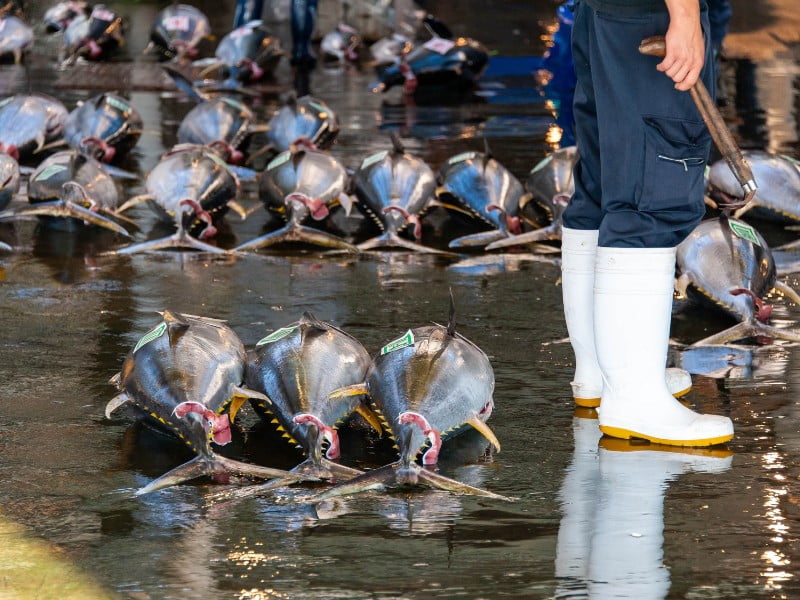
Wakayama Shopping Guide and Souvenir List
Wakayama Prefecture, with its coastal beauty, spiritual heartland, and rich agricultural heritage, offers a unique shopping experience. From artisanal crafts to regional food products, there are plenty of items that capture the spirit of Wakayama. This guide delves into the shopping scene and highlights must-buy souvenirs:
Wakayama Shopping Districts & Areas:
- Wakayama City Center: A bustling area with a mix of modern shops, malls, and traditional shopping streets. Here, you can find a blend of fashion, tech, and traditional Japanese goods.
- Marina City: Known for its fresh seafood market, it’s a haven for those looking to buy or taste the ocean’s bounty.
- Koyasan: This sacred area has several shops selling religious artifacts, incense, and unique souvenirs related to Buddhist culture.
Souvenirs & Products Unique to Wakayama:
- Mikan (Wakayama Oranges): Wakayama is Japan’s top producer of these sweet citrus fruits. You can buy them fresh or in various forms like candies, jams, or cakes.
- Umeboshi (Pickled Plums): The region is famous for its tart and salty pickled plums, a staple in Japanese cuisine. They make excellent gifts and can be used in various dishes.
- Koyasan Beads: Unique to the spiritual town of Koyasan, these beads, often used for meditation and prayer, are handcrafted by local artisans.
- Kishu Lacquerware: Known for its durability and beauty, Kishu lacquerware includes items like bowls, chopsticks, and bento boxes. Each piece is a work of art and represents the rich craft heritage of the region.
- Kishu Binchotan (White Charcoal): Used for purifying water or for grilling, this high-quality charcoal is a unique buy.
- Wakayama Washi Paper: Handmade and decorated with intricate designs, this traditional Japanese paper can be used for calligraphy, origami, or as a decorative piece.
- Kumano Brushes: Known for their quality, these brushes, used for calligraphy and makeup, are handcrafted in the Kumano region.
Specialty Food & Drinks:
- Kishu Sake: The clear waters of Wakayama make it an ideal place for brewing sake. There are numerous local breweries, each offering a unique flavor profile.
- Kishu Ume Shu (Plum Wine): A sweet and slightly tangy alcoholic beverage made from the region’s famous plums.
- Shirahama Seafood: If you’re comfortable transporting seafood, consider specialty items like dried fish, seaweed, and other marine products.
Local Markets & Shops:
- Kuroshio Market: Located in Marina City, this market is a seafood lover’s dream. From freshly caught fish to prepared sashimi and sushi, there’s a plethora of oceanic delights.
- Tama no Koshi: A popular souvenir shop in Wakayama City, it’s known for its wide range of local products, from snacks to crafts.
Shopping Tips:
- Tax-Free Shopping: Tourists in Japan can avail of tax-free shopping for items over a certain amount. Keep your passport handy and ask stores about their tax-free policy.
- Packaging: One of the delights of shopping in Japan is the meticulous care given to packaging. Even if it’s a small item, the wrapping is often a work of art in itself.
- Local Etiquette: While shopping, remember to be polite. It’s customary to greet storekeepers when entering and exiting shops, with a simple “konnichiwa” (good day) or “arigatou” (thank you).
Wakayama’s shopping scene, while not as vast as metropolises like Tokyo or Osaka, offers a unique, authentic experience. The emphasis here is on traditional crafts, regional specialties, and local produce. When in Wakayama, take the time to explore, savor, and shop for pieces of this beautiful region to take home with you.
source: Samuel and Audrey on YouTube
Where To Visit After Your Trip To Wakayama?
After immersing yourself in the coastal charm and spiritual ambiance of Wakayama, Japan’s vast and varied landscape offers a multitude of options for your next destination. Depending on your interests and travel goals, here are several destinations, each with its unique allure:
Osaka:
- Overview: Just an hour away, Osaka is Japan’s kitchen and a bustling urban hub known for its modern architecture, vibrant nightlife, and delicious street food.
- Highlights:
- Dotonbori Street: Famous for neon lights, food stalls, and entertainment.
- Osaka Castle: A historic monument set in a sprawling park.
- Universal Studios Japan: One of Asia’s top theme parks.
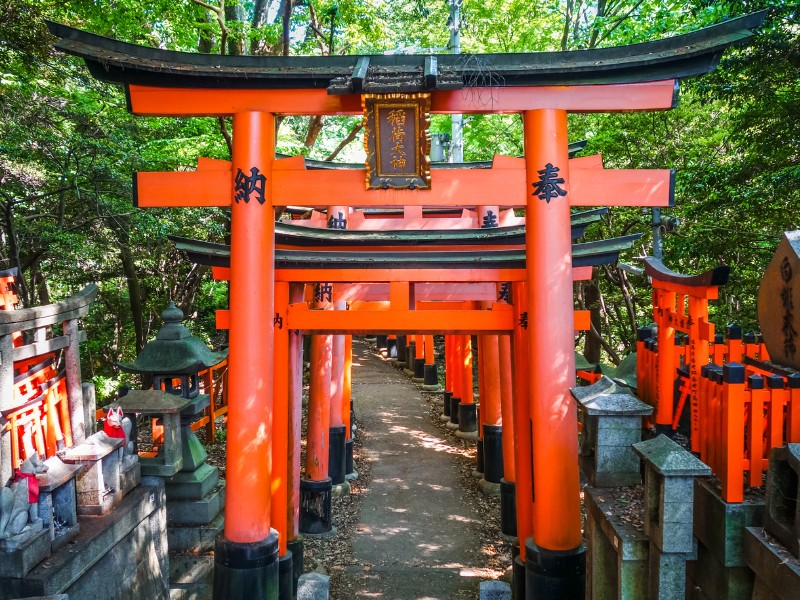
Kyoto:
- Overview: The cultural heart of Japan, Kyoto is renowned for its ancient temples, traditional tea houses, and geisha district.
- Highlights:
- Kiyomizu-dera: A historic temple offering panoramic views of the city.
- Fushimi Inari Shrine: Famous for its thousands of red torii gates.
- Gion: The city’s geisha district, perfect for evening strolls and traditional experiences.
Nara:
- Overview: A short train ride from Wakayama, Nara is known for its giant Buddha statue, sacred deer, and historic temples.
- Highlights:
- Todai-ji Temple: Home to the world’s largest bronze Buddha statue.
- Nara Park: A vast park where hundreds of friendly deer roam freely.
- Kasuga-taisha Shrine: Known for its bronze lanterns and serene ambiance.
Hiroshima:
- Overview: A symbol of peace and resilience, Hiroshima today is a vibrant city with a poignant history.
- Highlights:
- Peace Memorial Park: A tribute to the victims of the atomic bomb.
- Itsukushima Shrine: Located on Miyajima Island, famous for its iconic floating torii gate.
- Hiroshima Castle: A reconstructed fortress offering city views.
Tottori:
- Overview: Famous for its sand dunes, Tottori offers coastal beauty and intriguing landscapes.
- Highlights:
- Tottori Sand Dunes: Vast dunes that can be explored by camel or paragliding.
- The Sand Museum: Displays intricate sand sculptures.
- Uradome Coast: Known for its rugged cliffs, caves, and pristine beaches.
Okayama:
- Overview: Often a stopover, Okayama offers impressive gardens and historic landmarks.
- Highlights:
- Korakuen Garden: One of Japan’s top three gardens, known for its scenic beauty.
- Okayama Castle: Often called “Crow Castle” due to its black exterior.
- Kurashiki: A historic town with preserved wooden warehouses along a picturesque canal.
Shikoku Island:
- Overview: An often-overlooked destination, Shikoku offers pilgrimage routes, whirlpools, and beautiful landscapes.
- Highlights:
- 88 Temple Pilgrimage: A famous pilgrimage route connecting 88 Buddhist temples.
- Naruto Whirlpools: Dramatic natural whirlpools best viewed from tour boats.
- Iya Valley: Known for its deep gorges, ancient vine bridges, and hot springs.
Kobe:
- Overview: Nestled between the sea and the Rokko mountain range, Kobe is a cosmopolitan port city known for its rich maritime history, modern architecture, and of course, the world-famous Kobe beef.
- Highlights:
- Kobe Harborland: A shopping and entertainment district with a waterfront promenade.
- Arima Onsen: Japan’s oldest hot spring town, perfect for relaxation.
- Ikuta Shrine: One of the oldest Shinto shrines in Japan, providing a quiet retreat amidst the urban setting.
Kanazawa:
- Overview: Known as “Little Kyoto”, Kanazawa boasts beautifully preserved samurai and geisha districts, stunning gardens, and traditional crafts.
- Highlights:
- Kenrokuen Garden: One of Japan’s three best landscape gardens.
- Nagamachi: A well-preserved samurai district with earthen walls.
- Higashi-Chaya District: A historic geisha district where you can experience traditional tea houses.
Ise-Shima:
- Overview: Located in Mie Prefecture, Ise-Shima is known for the Grand Ise Shrine and its stunning coastal landscapes.
- Highlights:
- Ise Grand Shrine: Japan’s most sacred Shinto shrine.
- Ama Diver Huts: Meet the famous female divers and taste fresh seafood they catch.
- Meoto Iwa: The iconic “Wedded Rocks” which are considered sacred.
Takayama:
- Overview: Tucked in the Japanese Alps, Takayama is often referred to as “Little Kyoto in the Mountains. It’s renowned for its well-preserved old town, traditional inns, and seasonal festivals.
- Highlights:
- Sanmachi Street: Historic lanes lined with wooden merchant houses and sake breweries.
- Takayama Festival: One of Japan’s most beautiful festivals, showcasing elaborate floats.
- Hida Folk Village: An open-air museum with traditional thatched-roof farmhouses.
Matsue:
- Overview: Known as the “City of Water”, Matsue stands by Lake Shinji and boasts a magnificent castle, historic quarters, and traditional boat rides.
- Highlights:
- Matsue Castle: One of the twelve original castles in Japan.
- Samurai District: A well-preserved district that once housed samurai families.
- Lake Shinji: Enjoy boat rides or simply relax by its tranquil shores.
Nagoya:
- Overview: Japan’s fourth-largest city, Nagoya seamlessly blends modernity with history. It is a hub of automotive culture and has its unique culinary delights.
- Highlights:
- Nagoya Castle: A historic castle known for its golden dolphin-like ornaments called “shachi”.
- Toyota Commemorative Museum: Dive into the world of automobiles and understand Japan’s journey as an automotive giant.
- Osu Kannon Temple: A bustling temple area with surrounding shopping streets.
Kumano:
- Overview: South of Wakayama, the sacred Kumano region offers pilgrim trails, grand shrines, and scenic beauty.
- Highlights:
- Kumano Kodo: Ancient pilgrimage trails weaving through mountains and villages.
- Kumano Hongu Taisha: A grand shrine and part of the UNESCO World Heritage Sacred Sites.
- Kumano Nachi Taisha: A shrine known for its adjacent waterfall, Japan’s tallest.
Mount Koya (Koyasan):
- Overview: One of Japan’s holiest mountains, Koyasan is a spiritual retreat with over a hundred temples.
- Highlights:
- Okunoin Cemetery: Japan’s largest graveyard, a serene forested area leading to Kobo Daishi’s mausoleum.
- Kongobuji Temple: The head temple of Shingon Buddhism.
- Stay in a Temple: Experience traditional temple lodging and attend morning prayers.
Awaji Island:
- Overview: Located in the Seto Inland Sea, Awaji Island offers natural attractions and mythological sites.
- Highlights:
- Naruto Whirlpools: Witness the dramatic tidal whirlpools under the Onaruto Bridge.
- Awaji Yumebutai: A complex designed by the famous architect Tadao Ando, featuring gardens, terraces, and an amphitheater.
- Izanagi Shrine: Dedicated to the deities from Japan’s creation myth.
Yokohama:
- Overview: Just south of Tokyo, Yokohama is a vibrant port city with a blend of cultures, gardens, and stunning architecture.
- Highlights:
- Minato Mirai: A futuristic waterfront area with shopping, dining, and an iconic Ferris wheel.
- Chinatown: Japan’s largest Chinatown, bustling with restaurants and shops.
- Sankeien Garden: A traditional Japanese garden with historical buildings.
Naoshima Island:
- Overview: An art lover’s paradise, Naoshima is an island in the Seto Inland Sea dotted with contemporary art museums, installations, and sculptures.
- Highlights:
- Benesse House Museum: A fusion of art, architecture, and nature designed by Tadao Ando.
- Chichu Art Museum: Built mostly underground, it showcases artworks in tune with nature.
- Art House Project: Abandoned houses and workshops turned into art installations.
Travel Tips:
- Connectivity: Japan’s efficient rail system, especially the Shinkansen (bullet train), makes traveling between cities seamless. Consider getting a Japan Rail (JR) Pass for unlimited travel.
- Stay Duration: Depending on your interests, allocate at least 2-3 days for major cities like Kyoto or Hiroshima. Smaller cities might require just a day.
- Seasonality: Consider the time of year when planning. For instance, Kyoto during cherry blossom season can be especially enchanting.
After Wakayama, whether you’re seeking urban excitement, cultural immersion, or natural beauty, Japan’s diverse destinations ensure there’s something for every traveler.
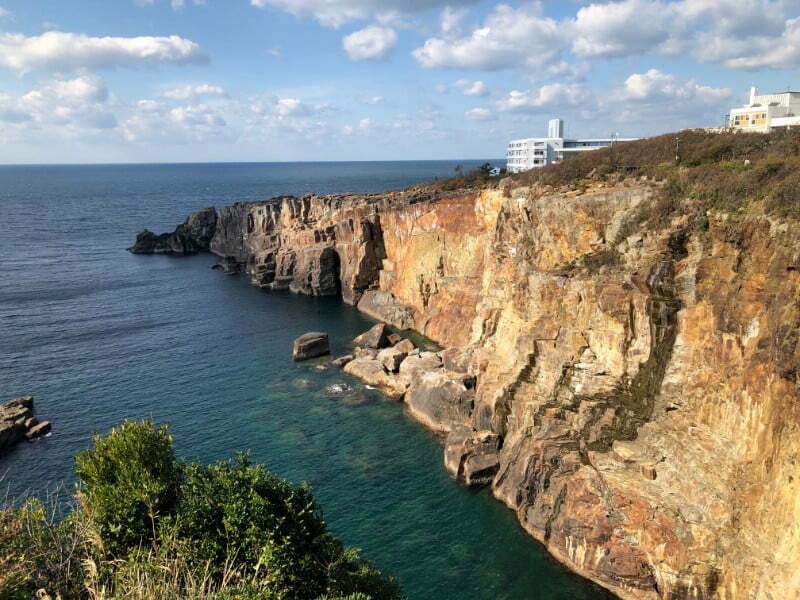
Wakayama Travel Guide: Final Thoughts
Wakayama Prefecture stands as a testament to the profound beauty, history, and spirituality that Japan offers to both the curious traveler and the dedicated pilgrim. After our in-depth exploration of this region, it’s clear that Wakayama is not just a destination, but a passage into Japan’s soul. Let’s encapsulate our journey and share some final reflections:
Nature’s Bounty and Beauty:
Wakayama’s landscapes oscillate between the serene and the grandiose. From the tranquil beaches of Shirahama to the majestic vistas at Koyasan, every view seems like a painted canvas of nature’s best works. Whether you’re hiking the Kumano Kodo pilgrimage routes, ensconced in the deep greens of ancient forests, or soaking in an onsen with the backdrop of a setting sun, the prefecture invites you to breathe deeply and savor every moment.
A Spiritual Odyssey:
Perhaps one of Wakayama’s most compelling draws is its profound spiritual heritage. The Kumano Sanzan shrines, the ethereal beauty of Koyasan, and the numerous temples dotted throughout the region are not just places of worship, but they embody centuries of spiritual traditions and beliefs. The very act of walking on the Kumano Kodo, where emperors and commoners once tread, is transformative. It’s not just a journey through a trail; it’s a journey within oneself.
Culinary Adventures:
The tastes of Wakayama are as varied and nuanced as its landscapes. From the umami-rich Wakayama ramen to the freshness of its seafood, every dish tells a story of the land and the sea. Savoring the local specialties is not merely about satiating hunger; it’s about understanding the culture, the history, and the meticulous craftsmanship of the Japanese culinary ethos.
The Fusion of Tradition and Modernity:
While deeply rooted in tradition, Wakayama is not locked in the past. The region offers modern amenities, shopping destinations, and transportation networks that make travel seamless. This juxtaposition of the ancient and the modern offers travelers a unique insight into how Japan harmoniously blends its rich history with contemporary innovations.
Genuine Hospitality:
Beyond the sights and sounds, it’s the people of Wakayama who make the journey truly unforgettable. Their warm hospitality, genuine smiles, and an innate desire to share their culture and stories set the tone for genuine connections. Whether you’re staying in a modern hotel, a traditional ryokan, or a temple lodging in Koyasan, you’ll experience the omotenashi, the unique Japanese spirit of hospitality that anticipates and fulfills the guest’s needs.
Final Thoughts:
Wakayama is more than just a travel destination. It’s the gentle rustling of the Kii Mountains’ ancient trees, the profound chants emanating from the temples of Koyasan, the warmth of a bowl of ramen on a chilly evening, and the age-old stories whispered by the waves of the Pacific. Until next time!
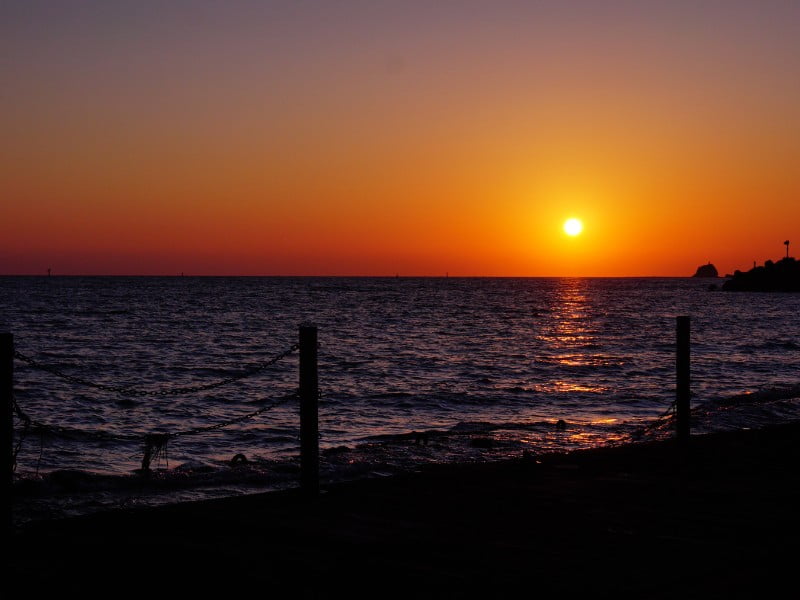
Ode To Wakayama
In Wakayama where mountains meet the sea, A dance of ancient spirits, wild and free. From Kumano trails where pilgrims tread, To Koyasan’s quiet, sacred bed.
The Pacific whispers tales of old, Of samurai fierce and emperors bold. Mystic forests, temples high, Underneath the vast, azure sky.
Onsen warmth, a soothing embrace, Time slows, in this tranquil space. Wakayama’s ramen, a flavor delight, The city’s lights shimmering at night.
Journey to where traditions blend, With modern beats, the tales never end. For in Wakayama, you’ll surely find, A voyage of the soul, body, and mind.
So traveler, as you embark and roam, Find in Wakayama, a piece of home.
